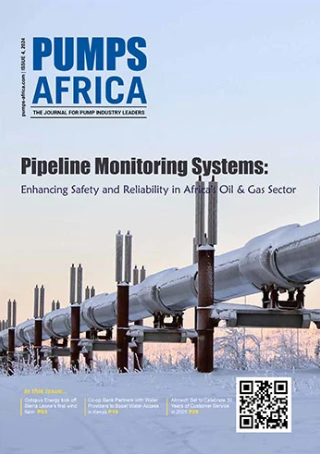Not all greases are created equal. But beyond just making sure they choose the right type of grease for an application; how can maintenance teams know which grease will perform best and last as long as possible?
Local lubrication specialists Lubrication Engineers (LE) South Africa use a brute force mechanical test tool called the “rat trap” to assess how two lubricants compare.
LE National Marketing Manager Gavin Ford explains that the rat trap test can show how two greases with the same viscosity react differently to the same force or pressure over time. Each lubricant is applied to a plate on the apparatus and then the spring-loaded clapper is released. “When we release it, it hits both plates with the same speed and force. We then compare how the two lubricants have reacted. We can snap the device several times to simulate what would happen over time or with continuous use,” explains Ford.
Picking the correct grease
However, the rat trap tool is only one element for determining if the selected grease is the right one for the intended application.
“People often think a grease is a grease is a grease,” says Ford. “However, greases are used for such a wide range of applications, their viscosity and properties vary significantly. You can get greases that are the consistency of peanut butter, toffee or honey. Obviously, each of these lubricants will behave differently,” he adds.
To measure grease consistency, the National Grease Lubricating Institute (NLGI) has created a standardised scale. It grades grease consistency from 000 to 6. The penetration test measures how deep a standard cone falls into a grease sample in the tenths of millimeters. Each NLGI grade corresponds to a specific worked penetration value range.
Equipment manufacturers use this scale to recommend the grade of lubricant required for their equipment components, and it’s essential to adhere to this recommendation to optimise the effectiveness and longevity of equipment. “If an equipment manufacturer specifies NLGI 001 and you’re using NLGI 2, you’re going to run into problems, because the grease penetration is different,” says Ford.
The power of additives
In its greases, LE uses proprietary additives, Almasol, Quinplex and Monolec. Almasol is a solid wear-reducing additive that is able to withstand extremely heavy loads, harsh chemicals and temperatures up to 1,038 degrees Celsius. It is attracted to metal surfaces, forming a microscopic layer, but does not build up or affect clearances. Almasol minimises metal-to-metal contact and the resulting friction, heat and wear. Monolec is a wear-reducing additive that creates a singular molecular lubricating film and Quinplex is an impact-resistant additive that contributes towards outstanding water resistance.
When used as a comparative product in the rat trap test, a grease without Quinplex inevitably disperses from the plate where it’s been applied much quicker than one that contains this additive. “The non-Quinplex grease loses its tackiness and heats up far more quickly,” says Ford. “Each of our unique, proprietary additives has been designed to yield specific benefits. This is a tangible way we can show our customers just how much of a difference our unique additives can make in protecting their equipment.”
Share






